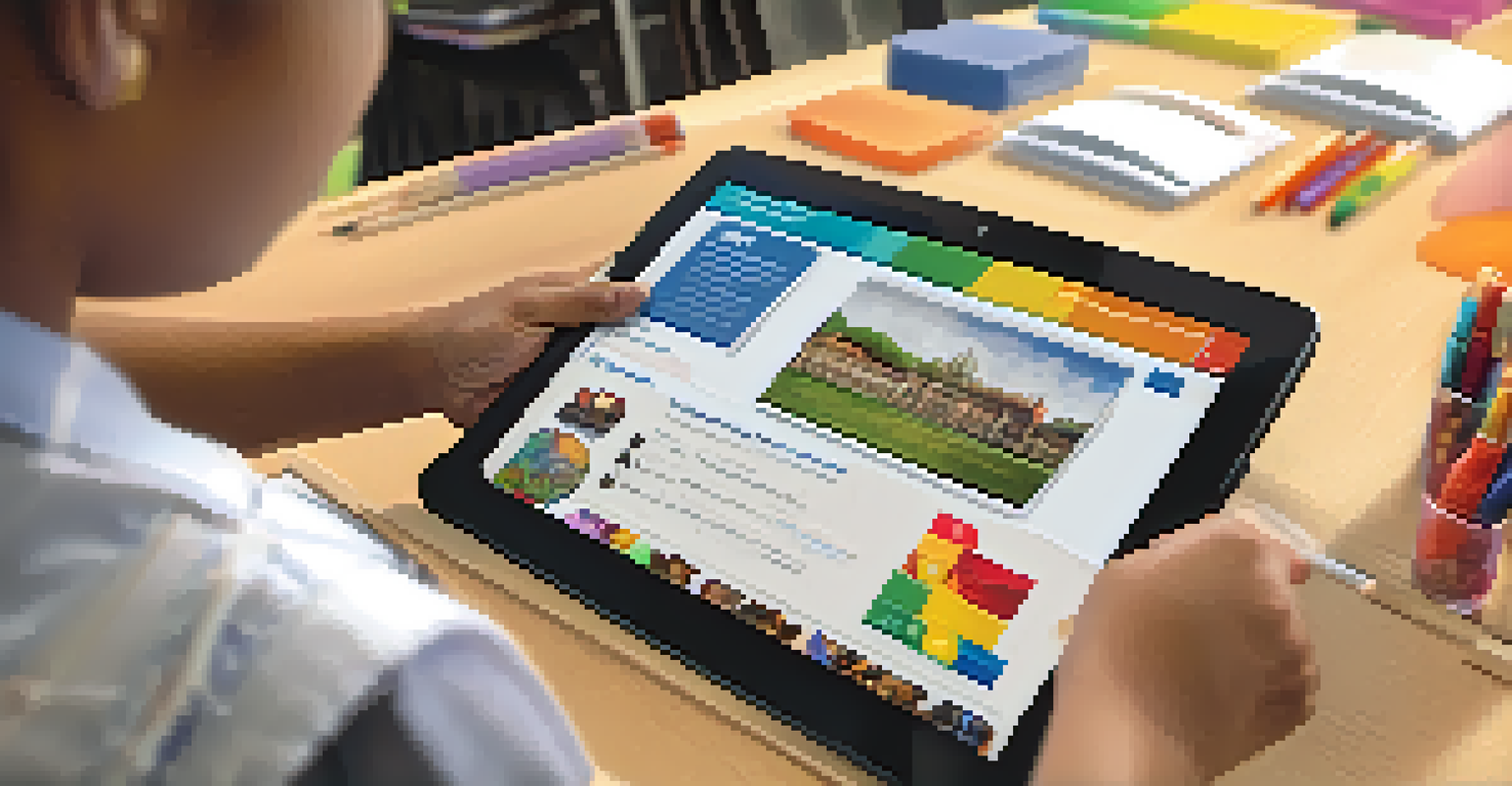Educational Equity: Bridging the Gap Between Schools

Understanding Educational Equity and Its Importance
Educational equity refers to the principle that all students should have access to the resources, opportunities, and supports they need to succeed, regardless of their background. This is crucial because it addresses systemic disparities that often disadvantage certain groups of students. By ensuring equitable access, we can create a more inclusive learning environment that fosters student achievement for everyone.
Education is the most powerful weapon which you can use to change the world.
For example, think of educational equity as a race where every runner starts from the same line. If some students are starting from behind due to lack of resources, they’ll need extra support to catch up. The goal is to level the playing field, enabling all students to reach their full potential, no matter their circumstances.
Ultimately, understanding and prioritizing educational equity is about recognizing that education is a right, not a privilege. By bridging the gaps in access and opportunity, we can cultivate a system where every student is empowered to thrive.
Current Challenges in Achieving Educational Equity
Despite progress, numerous challenges still hinder educational equity in schools. Factors such as socioeconomic status, race, and geographic location can significantly impact a student's access to quality education. For instance, schools in affluent areas often have better funding and resources than those in low-income neighborhoods, perpetuating the cycle of disadvantage.

Additionally, the digital divide has been exacerbated by recent global events, leaving many students without the technology they need for remote learning. Imagine a student trying to participate in an online class without a reliable internet connection or device—it’s a barrier that can stifle their learning experience. This disparity highlights the urgent need for targeted interventions to support under-resourced schools.
Educational Equity Benefits All Students
Ensuring that all students have equal access to resources and opportunities fosters an inclusive environment that supports student achievement.
Moreover, systemic issues like implicit bias in disciplinary actions can disproportionately affect marginalized students, further widening the equity gap. Addressing these challenges requires a collective effort from educators, policymakers, and communities to create a more equitable educational landscape.
The Role of Policy in Promoting Educational Equity
Policy plays a pivotal role in advancing educational equity by establishing frameworks and guidelines that support underserved populations. For example, initiatives like Title I funding aim to provide additional resources to schools in low-income areas, helping to level the playing field. These policies not only allocate funds but also encourage schools to adopt practices that promote inclusivity and support for all students.
Equity is not just about equality; it’s about fairness and justice.
Furthermore, advocating for equitable policies can lead to systemic changes that address the root causes of educational disparities. It’s similar to fixing a leaky faucet; if you only address the drip but ignore the underlying plumbing issue, the problem will persist. Comprehensive policies are essential for creating lasting change in the educational system.
Engaging stakeholders—such as teachers, parents, and community leaders—in policy discussions can also amplify the voices of those directly affected by educational inequity. By working together to shape policies, we can ensure that they reflect the needs of all students and create a more just educational landscape.
Community Engagement: A Key to Educational Equity
Community engagement is vital in promoting educational equity, as it fosters collaboration and support among various stakeholders. Schools that actively involve parents and community members in decision-making processes are more likely to create inclusive environments that cater to diverse needs. Think of it as a team effort; when everyone is on board, the potential for success multiplies.
For instance, community organizations can partner with schools to provide additional resources, mentoring, and tutoring programs. These partnerships not only enhance student support but also strengthen community ties, creating a holistic approach to education. It’s like building a bridge; the stronger the connections, the more stable and effective the support system becomes.
Community Engagement Enhances Equity
Active involvement of parents and community members in schools creates a collaborative environment that meets diverse educational needs.
Moreover, by promoting open communication between schools and families, we can address concerns and celebrate successes together. Engaging the community ensures that educational practices are culturally responsive and relevant, ultimately benefiting all students.
Innovative Strategies for Bridging the Equity Gap
Implementing innovative strategies can significantly enhance educational equity in schools. For example, personalized learning approaches allow educators to tailor instruction to meet individual student needs, ensuring that everyone receives the support necessary for success. This method transforms the traditional one-size-fits-all model into a more dynamic and effective learning experience.
Another promising strategy is the use of technology to expand access to educational resources. Online platforms and digital tools can provide students with additional materials and learning opportunities, regardless of their location. Imagine a student in a rural area accessing the same high-quality online courses as their urban peers; technology can serve as a powerful equalizer in education.
Finally, implementing social-emotional learning (SEL) programs can help address the emotional and psychological barriers to learning. By nurturing students' emotional well-being, we can create a more supportive educational environment that promotes resilience and motivation, ultimately bridging the equity gap.
The Importance of Cultural Competence in Education
Cultural competence is essential in fostering educational equity, as it allows educators to understand and respond to the diverse backgrounds of their students. By embracing students' cultural identities, teachers can create a more inclusive classroom environment that values diversity. Think of it as adding spices to a dish; each ingredient enhances the overall flavor, making it more appealing and satisfying.
Professional development opportunities focused on cultural competence can equip teachers with the tools they need to engage all students effectively. This training can help educators recognize their biases and develop strategies to create a more equitable learning environment. It’s about building awareness and empathy, which are crucial for fostering positive relationships with students.
Cultural Competence Drives Inclusion
Embracing students' cultural identities helps educators create a more inclusive classroom, enhancing engagement and motivation.
Moreover, incorporating culturally relevant curricula can enhance student engagement and motivation. When students see themselves reflected in their learning materials, they are more likely to connect with the content and feel valued in the educational process. This sense of belonging is a vital component of achieving educational equity.
Measuring Success in Educational Equity Initiatives
Measuring success in educational equity initiatives is crucial for understanding their impact and effectiveness. Schools can use various metrics to assess progress, such as student achievement data, attendance rates, and graduation rates. By analyzing this data, educators can identify trends and areas for improvement, allowing them to refine their strategies over time.
Additionally, gathering feedback from students, parents, and teachers can provide invaluable insights into the effectiveness of equity initiatives. Surveys and focus groups can help identify challenges and successes, ensuring that all voices are heard in the process. This feedback loop is akin to a compass; it helps guide efforts toward a more equitable educational landscape.

Ultimately, measuring success is not just about numbers; it’s about the stories behind those numbers. By celebrating student achievements and acknowledging the ongoing challenges, we can foster a culture of continuous improvement and commitment to educational equity for all.